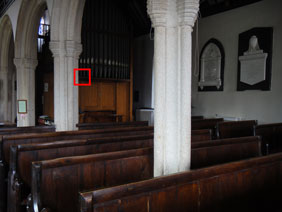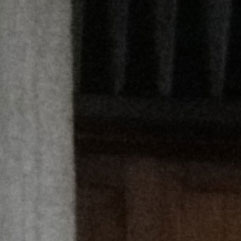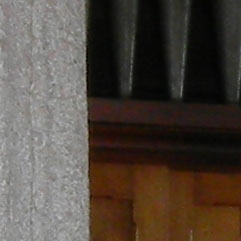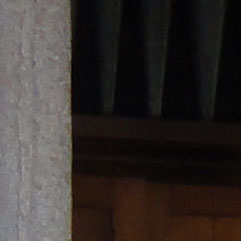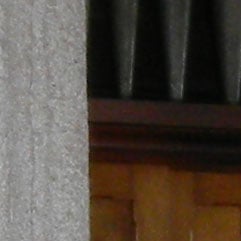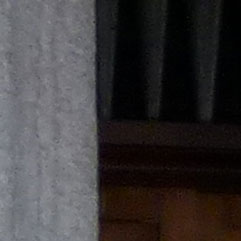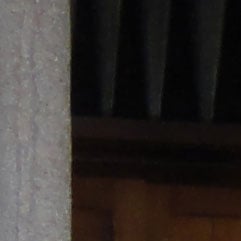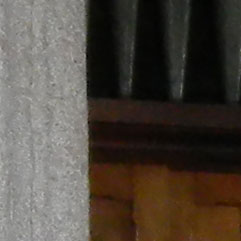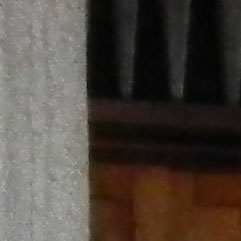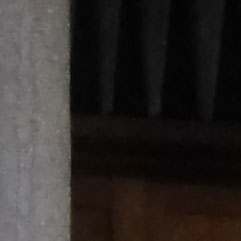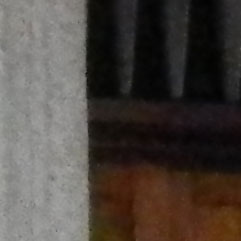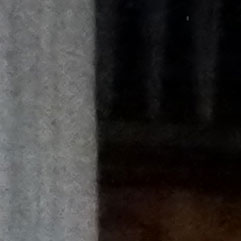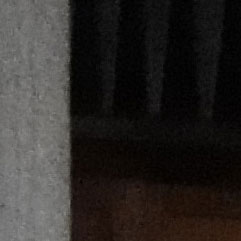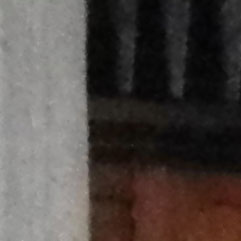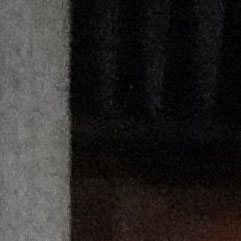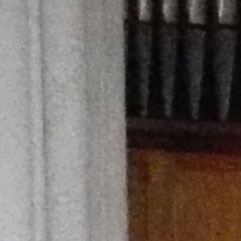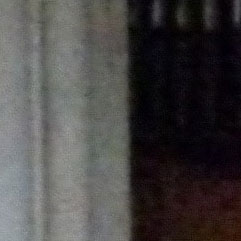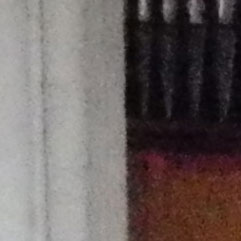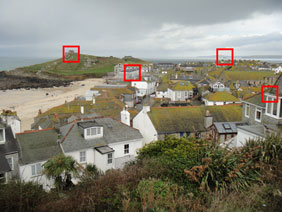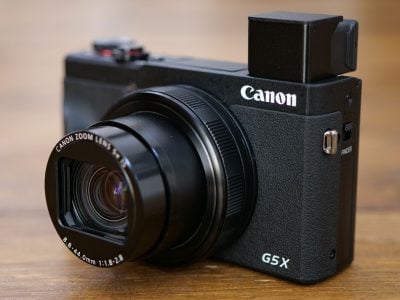Sony Cyber-shot DSC-TX9
-
-
Written by Gordon Laing
Quality
Sony Cyber-shot TX9 vs Nikon COOLPIX S80 vs Panasonic Lumix FX700 High ISO Noise
The above shot was taken with the the Sony Cyber-shot TX9 in Program mode with the lens at a wide angle setting of 6.3mm (35mm equivalent). The ISO sensitivity was set to 125 ISO and the exposure was half a second at f3.5. The crops are taken from the area marked with the red square and presented below at 100%. The first thing to say about the Cyber-shot TX9’s low light performance is that it’s quite difficult to make out much detail in the shadow regions of the images from which our crops are taken. The Cyber-shot TX9 hasn’t under-exposed the image – the histogram is in the middle with no shadow clipping – and, although half a stop more exposure would have produced a better result without highlight clipping, the Cybershot’s exposure is good enough. None of which changes the fact that there isn’t a lot of detail in the shadows. There’s plenty of detail in the stone column on the right though, at least at the 125 ISO setting. At 200 ISO you can already begin to see the softness creeping in but, while there’s a marginal difference between these two lower ISO sensitivity settings you’d be hard pressed to spot it other than if you were looking closely at 100%. At 400 ISO there’s a step change with the edge of the column starting to break up and a very noticeable drop in the amount of detail in the stonework. 400 ISO is probably the maximum sensitivity setting you’d want to use for ‘good quality’ shots, anything beyond that is going to be a victim of quite intrusive noise. At the 1600 and 3200 ISO setting the noise is so overwhelming that, unless the subject is very close to your heart, you’re not going to be too interested in the results. Compared with the Nikon COOLPIX S80, the most obvious difference is that the S80 has done a much better job of retaining tonal detail in the shadows – even though the exposure was very similar. On that basis alone and regardless of noise you’d have to hand it to the COOLPIX S80. As with the outdoor test, the COOLPIX noise crops appear to show better detail, but also look over-processed. In spite of that, we think the COOLPIX S80 has the edge, with better control of noise and retention of image detail all the way up the scale. And it goes a long way up, with 3200 and 6400 ISO settings, albeit at reduced resolutions. Like the Cyber-shot TX9 the Lumix FX700 has failed to retain tonal detail in the shadows, despite selecting a very similar exposure to the the other two cameras. The Lumix FX700 results are also quite cold in terms of colour balance. Right from the off at 100 ISO the Lumix FX700 crops are lacking in detail and look very processed and for that reason we’d put the Lumix FZ700 in third place behind the Nikon COOLPIX S80 and sony Cyber-shot TX9. To an extent, these higher ISO settings are only really of academic interest, Sony has included them because it can, rather than because they’re particularly useful. For good results in low light you’re nearly always better off using the Anti Motion Blur or Hand-held Twilight scene modes. These take a rapid sequence of six shots and produce a composite image. For comparison purposes we’ve included below crops taken at the same time in the same conditions using both of these scene modes alongside the 400 ISO program Auto mode crop. It’s disappointing to note that neither of these composite modes has managed to get any more shadow detail than the Program auto mode in this particular composition, but both the examples below exhibit lower noise levels than their equivalents taken in Program at the same sensitivity.
Now head over to our Sony Cyber-shot TX9 gallery to see some more real-life shots in a variety of conditions.
|
Sony Cyber-shot TX9 vs Nikon COOLPIX S80 vs Panasonic Lumix FX700 Real-life resolution
|
Sony Cyber-shot DSC-TX9 |
Nikon COOLPIX S80 |
Panasonic Lumix DMC-FX700 | ||
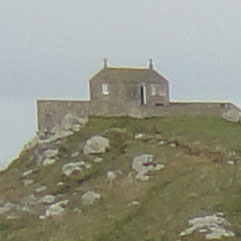 | 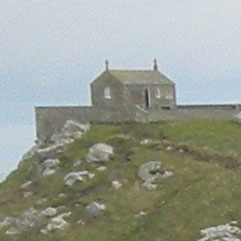 | 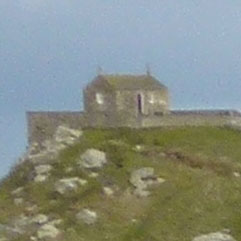 | ||
f4.5, 125 ISO |
f3.6, 80 ISO |
f4, 100 ISO | ||
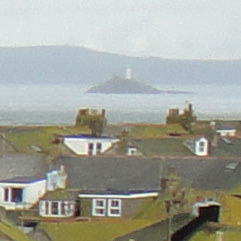 | 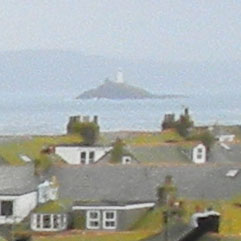 | 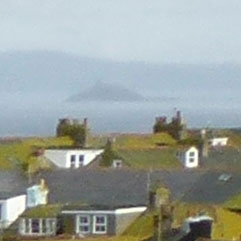 | ||
f4.5, 125 ISO |
f3.6, 80 ISO |
f4, 100 ISO | ||
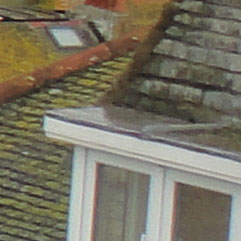 | 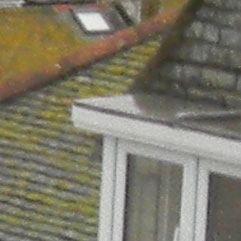 | 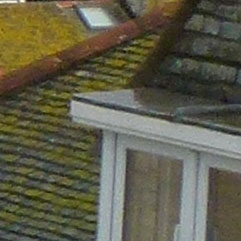 | ||
f4.5, 125 ISO |
f3.6, 80 ISO |
f4, 100 ISO | ||
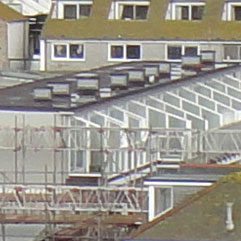 | 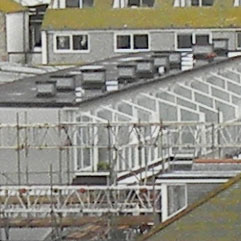 | 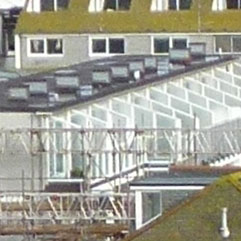 | ||
f4.5, 125 ISO |
f3.6, 80 ISO |
f4, 100 ISO |

